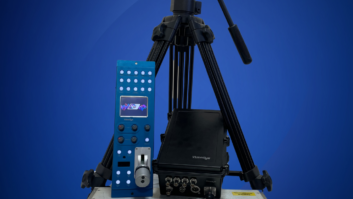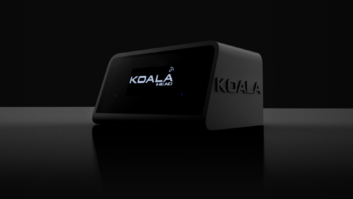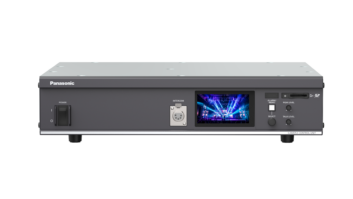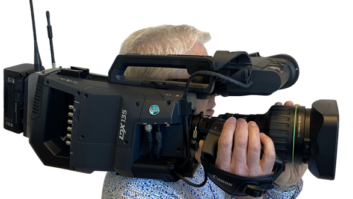A new European Union anti-dumping levy on Japanese cameras could see what are being referred to as ‘dramatically’ increased prices for almost all types of cameras commonly used for broadcast and professional applications, writes David Fox.
A new anti-dumping levy has been called for by Grass Valley Nederlands, the EU’s sole broadcast camera manufacturer, and would extend the remit of an existing camera levy that is applied to triax studio cameras.
The European Commission is now looking at all cameras with one or more image sensors of 6mm diagonal or more (which effectively includes everything that broadcasters might use). It could apply to cameras for broadcast, digital cinematography, ENG or professional applications, but not cameras for medical, surveillance or personal use. It doesn’t include separate lenses or dockable recorders.
“The decision on anti-dumping takes into account several things. Firstly, whether there are substantial differences in prices between the European market and the domestic market of the manufacturers,” explained Grass Valley president, Marc Valentin. “From what we see, we do think that this is the case in a number of areas. Secondly, does this hurt the European industry?”
This is code for ‘does this hurt Thomson Grass Valley’. Unsurprisingly, again Valentin feels it does in certain areas.
The parameters of the investigation have been widely drawn because the Commission will want to look at the market as a whole to ensure it understands it properly, and then focus on where anti-dumping measures are applicable. Understandably, other manufacturers are taking quite a cool view of the move.
“For this complaint to be issued from a camera manufacturer that to date is not in the camcorder market is quite strange. The scope of the complaint includes handheld DV-style units – an area of the market that does not include the complainant – competing with the HVX200 and AGDVX 100 camcorders,” said Ian Lowe, general manager, broadcast sales, Panasonic UK.
Valentin believes that the interpretation that some competitors are placing on the submission, such that cameras like Sony’s popular Z1 or the HVX200 will see a doubling in prices, is unwarranted. The EC will only be looking for specific areas of both dumping and harm. “It is difficult for [the EC] to restrict themselves to specific areas,” he said. “If there is no levy, if means we are basically in a very fair market overall, and that is what we want.”
The original levy on television camera systems was put in place in 1994, following complaints by Philips and Thomson, and increased (on Sony and Ikegami cameras) in 1997. This left Ikegami having to pay duty at 200.3%, Sony at 108.3%, Hitachi at 52.7%, and any other Japanese manufacturers at 96.8%. When the Commission last investigated the levy in 2000, it found that prices of cameras hadn’t risen after the levy was imposed. At that time the level of dumping was judged to be at least 30%. The old levy was coming up for review, with a conclusion due by the end of September.
“We’re asking them to look into the question again, and whether there are still grounds for anti-dumping measures,” said Valentin.
The Japanese manufacturers are being far more active in responding to the complaint than they were previously (when “non co-operation” by all the Japanese manufacturers, except Hitachi, led to higher levies). JVC, for example, has sent letters to its customers asking them to make their feelings known to their MEPs and the Commission, and all the manufacturers have been spending considerable time on responding to the Commission’s questionnaire by July 14.
“Is the marketplace ready to pay double product prices? I don’t believe that – customers don’t want to pay more, they want cheaper products,” stated Lowe. “This potential increase doesn’t serve customers. Nobody wants to pay more to make a programme, they all want better products for less cost.”
Of the Japanese manufacturers, only Sony and Ikegami offer EU-originated products. “Sony is co-operating in good faith with the investigation of the European Commission,” said Olivier Bovis, senior manager, sales management office, Sony Europe. “We hope that the investigation will not have an impact on European customers or broadcasters.”
As the rate of the levy hasn’t been decided yet, the exact consequences are unpredictable, but if there is to be an extended levy, he believes it will have a considerable impact on pricing. It would also be likely to reduce choice and make EU-based companies less competitive against facilities or freelancers from outside the EU.
“This is not an issue of one manufacturer versus another manufacturer, it is a question that relates to the complete content creation industry economy in the EU.”
“It would potentially put up the prices of those dramatically,” commented Mark Capstick, general manager, Ikegami Electronics UK. “It depends on the duty, if any, that would apply. If it was 5% or 10% we would probably continue to import from Japan. If it was larger, we would have to manufacture in the EU.”
Ian Scott, director, pro video operations, UK, JVC Professional Europe believes that the complaint is: “ludicrous. They seem to forget that the majority of customers and users of professional camcorders, of one-third inch and above, are not broadcasters,” he said. “The bulk of the market would never consider themselves as potential customers for Thomson cameras or camcorders.”
For example, JVC’s ProHD range has sold 12,000 units over the ten months it’s been available, some 5,000 of those in Europe. “Probably 80% of those are being used by people who are not in the broadcast market at all.”
JVC products weren’t affected by the previous levy, because it didn’t have cameras in that market – although the levy did mean that it didn’t invest in developing such cameras, as it might have otherwise.
“There is no point in creating a product that could be sold to less than half of its potential market. We can’t have a product for the US alone,” he explained.
The complaint has already cost a considerable amount in terms of legal fees and lost management time. “As you can imagine, we are not very happy.”







